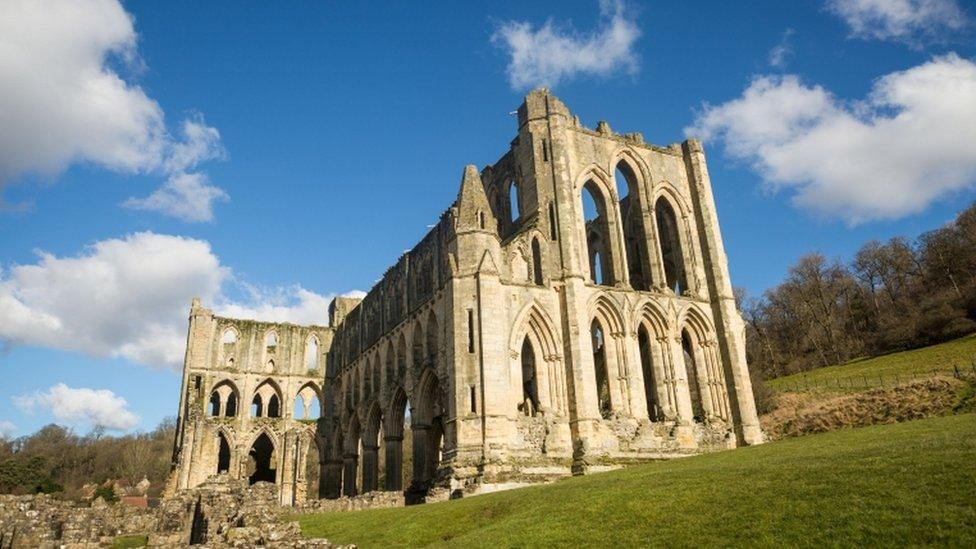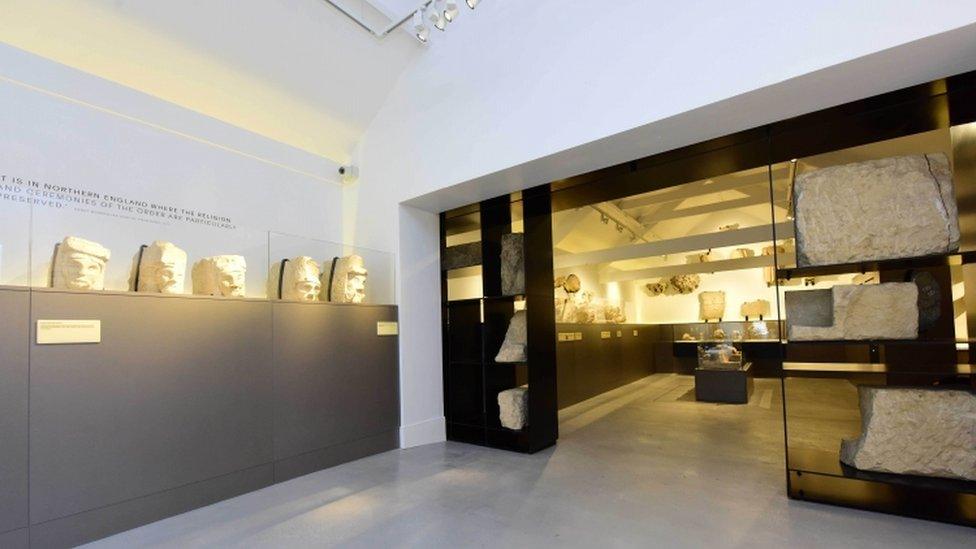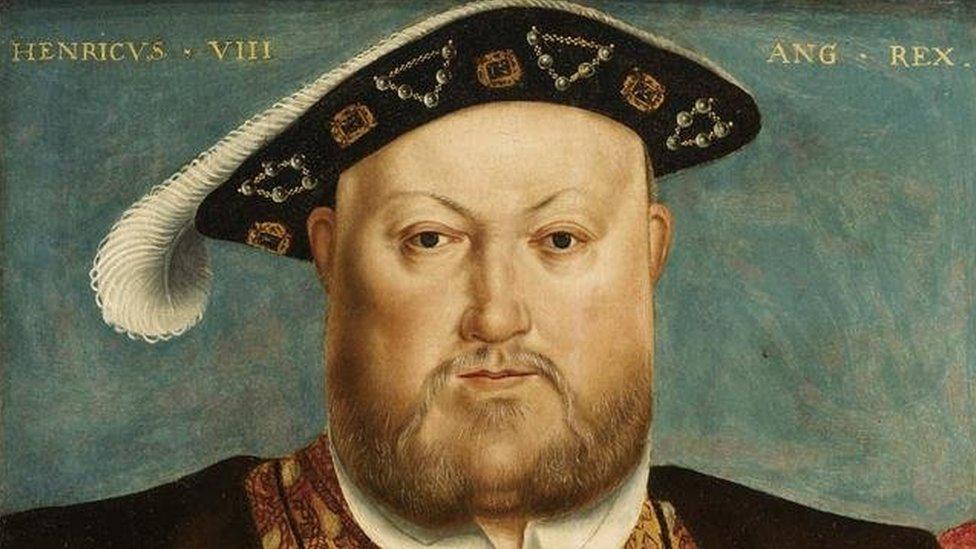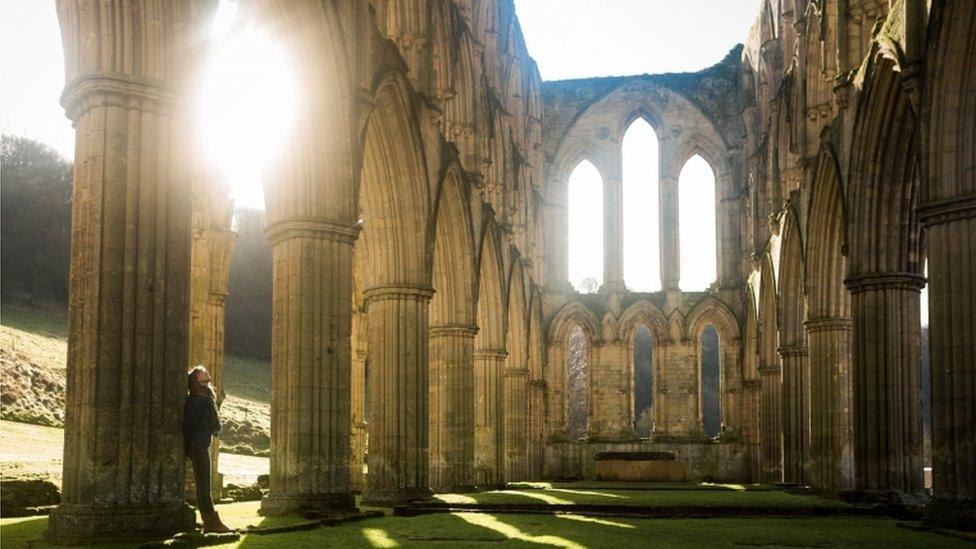Rievaulx Abbey treasures on show in new museum
- Published

Rievaulx Abbey was "was a place of huge spiritual significance", said English Heritage
Artefacts from an abbey destroyed by Henry VIII have gone on display for the first time in nearly 500 years.
The items at Rievaulx Abbey, near Helmsley, North Yorkshire, are being displayed following a £1.8m redevelopment by English Heritage.
Objects on display include a half-tonne lead bar stamped with Henry's emblem which is all that remains of the abbey's roofs and windows.
Rievaulx Abbey was destroyed by royal command in 1538.
Other exhibits include medieval stone carvings, chess pieces and gold coins that tell the story of the first Cistercian abbey in the north of England.
Dr Michael Carter, for English Heritage, said: "Rievaulx Abbey is one of the most important abbeys in England and the setting one of the most beautiful.
"It was a place of huge spiritual significance for the country and one utterly transformed by dramatic upheavals under Henry VIII."

The treasures are on display in a new English Heritage museum.
Rievaulx was founded in 1132 and at its peak in the 1160s was home to more than 600 men.
Many of the ruined buildings seen today were constructed by Aelred, abbot from 1147 to 1167, who became the most prominent religious figure of his day in England.

Henry VIII ordered the building to be stripped of valuables such as lead before being left uninhabitable
It was one of more than 800 monasteries closed by Henry VIII and his chief minister Thomas Cromwell following the reformation which severed the English church from Rome.

Rievaulx was wrecked on the orders of Henry VIII